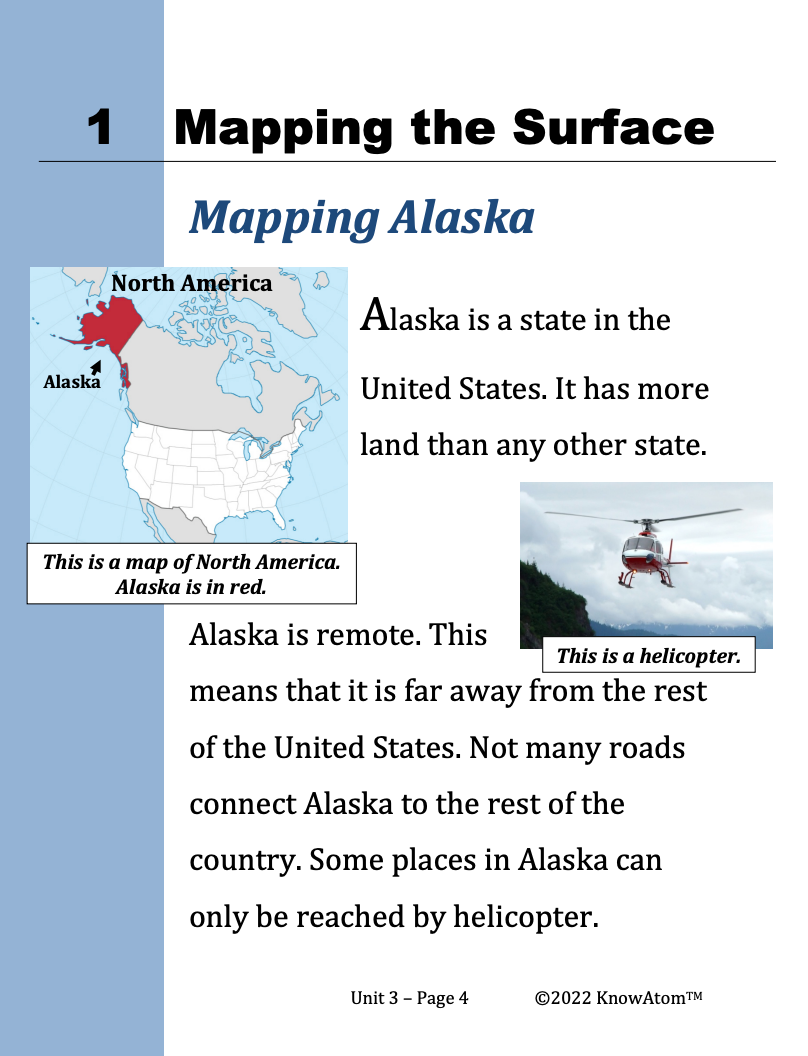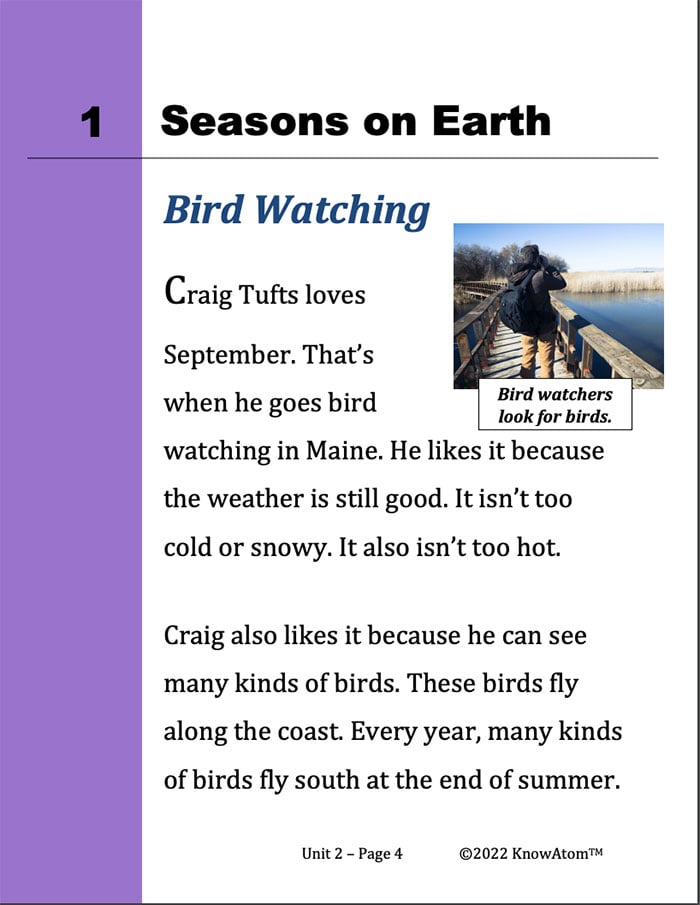
In this unit, students explore the phenomena of Earth landforms and the water cycle. Once students have modeled landforms and created maps showing the shapes and kinds of land and bodies of water, students analyze how water moves over the land as it flows downhill because of gravity and cycles between solid and liquid depending on the amount of heat present.

In kindergarten, students begin to develop the practices that scientists and engineers use to help them answer questions and solve problems. This page is a high level extract from lesson 3, where students carry out an experiment to determine how heat affects water in a solid form (ice).

In kindergarten, students work towards developing routines and practices that scientists use to investigate phenomena and solve problems. This page is an extract from lesson 5 where students build on their weather observation skills as they observe and record local weather data to analyze weather patterns in their geographic area. Students continue to collect weather data over several months as they move onto the next lessons to build on their weather patterns analysis.

In kindergarten, students begin to develop the practices that scientists and engineers use to help them answer questions and solve problems. Students ask questions, make observations, and collect data as they explore weather patterns on Earth and investigate how different Earth materials are heated by the sun.

In kindergarten students learn to ask questions, make observations, and collect data as they explore weather patterns on Earth and investigate how different Earth materials are heated by the sun. This lesson is part of a kindergarten series that students learn the practices that scientists and engineers use to help them answer questions and solve problems.

In this unit, students explore science phenomena related to patterns that result from Earth’s rotation and the moon’s orbit around the sun. This page provides a brief overview of lesson two of this unit, in which students conduct two investigations and use the patterns they discover to make predictions about the future positions of the sun, moon, and stars in the sky. In the first investigation, students observe the sun’s position in the sky at different times of day, drawing a diagram (model) of the sun’s position above the horizon. In the second investigation, students use a sundial model to explore the relationship between the sun’s position and the length of shadows.

In this unit, students investigate the science phenomena of seasonal patterns and water cycles. Once students have analyzed how seasonal patterns of sunrise and sunset can be observed and predicted, they focus on seasonal temperature and rainfall patterns. They investigate temperature patterns of a specific location throughout the year.
Standards citation: NGSS Lead States. 2013. Next Generation Science Standards: For States, By States. Washington, DC: The National Academies Press. Neither WestEd nor the lead states and partners that developed the Next Generation Science Standards were involved in the production of this product, and do not endorse it.
